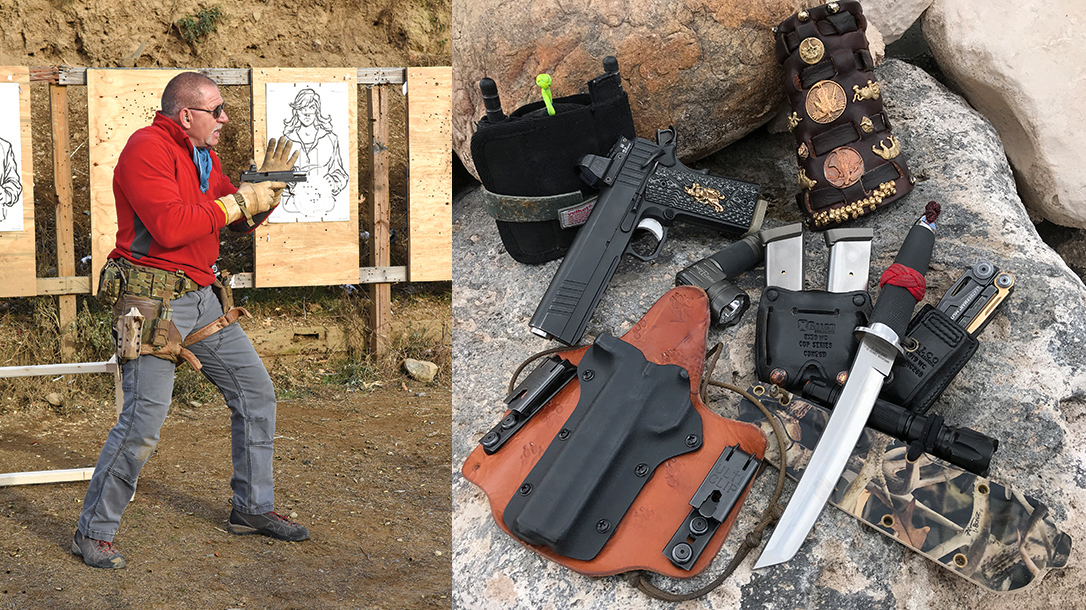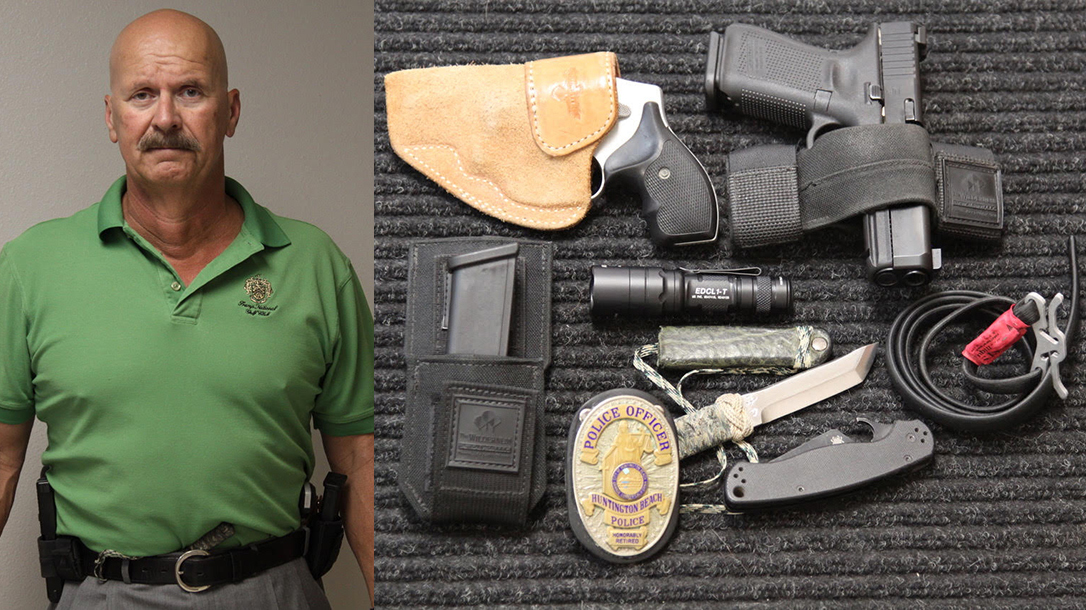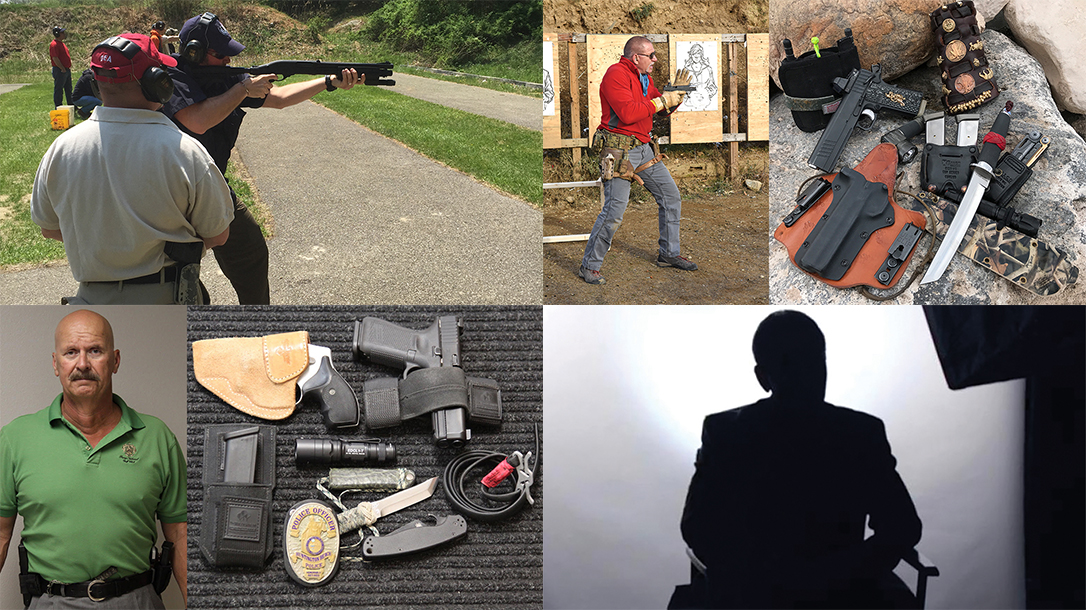Thirty-six-year-old Michael Abram was on the brink, and his mind was spinning. He felt as if he was in danger from the man inside the house in front of him. Abram felt this man not only posed a danger to him, but also to the world. So he found a way inside the house with the intent of stopping this threat. After gaining entry, Abram found a knife and began to search for this man.
When Abram found him, he attacked. Lunging at the man, he stabbed him repeatedly. The man tried to fight back, but Abram’s force and rage were too much for the peaceful disposition of the man he attacked. Abram plunged the knife into the man 40 times.
Advertisement — Continue Reading Below
The man’s wife tried desperately to stop Abram and eventually used a fireplace poker and lamp to subdue him. Abram later told police that he believed that the man was “an extraterrestrial,” and that a group he was associated with were “witches from Hell who rode broomsticks.”
Abram’s paranoid schizophrenia led him to believe that his victim, George Harrison, and the rest of the Beatles posed a grave threat to the world. This leads to the question of how celebrities, executives and other famous people protect themselves from vicious attacks like this.
The answer usually involves a combination of some basic home security and a personal protection professional. Their duty is to ensure their “principal” is safe. This is usually done with a small footprint, some ingenuity and good gear. For more, we spoke to a few protection specialists.
Advertisement — Continue Reading Below
Personal Protection Specialist No. 1 — Chris Caracci
Retired Navy SEAL and law enforcement officer, trainer and Hollywood consultant

Chris Caracci is a force to be reckoned with in the training business, and he’s learned a few things over the course of his career. He said, “Since you are often working light or alone, efficiency is the key.”
He also feels accessing his equipment should feel like instinct. “I try to wear everything as close to the body as possible so I can feel all my gear and limit printing. I carry an array of pedestrian gear, including a Ziploc bag or container of baking soda due to the threat of thrown chemicals these days.”
Advertisement — Continue Reading Below
Caracci continued, “My belt is always a rappelling type with a metal buckle that acts as belly protection from a knife, bullet, etc., and the belt itself can be used as sling, tourniquet or to carry someone. On my belt is always my primary light, which is a right-angle First-Light model that features 600 lumens of white, red, green or ultra-violet light. I favor the right-angle light because I can use it hands free.”
For a firearm, Caracci believes bigger is better. “My primary is the Guncrafter Industries .50 GI with a Leupold DeltaPoint sight. I carry the gun for a cross-draw from an inside-the-waistband holster. The holster is a custom Kydrix/leather hybrid rig made by Silver Bullet Concealment in Las Vegas. I also carry two magazines and a Leatherman tool, all inside the pants. Any backup weapons, including knives, must be located where either hand can get to them. My backup gun is either a Springfield XD(M) .45 or 10mm EAA.”
Advertisement — Continue Reading Below
For an ingenious approach to non-lethal protection, Caracci created a special laser device that is capable of incapacitation, and he also wears a special leather cuff that he created. “When I was a cop, I’d wear the cuff under my jacket or shirt, usefully as a non-lethal approach with animals and against cut/slash attacks.”
For body armor, Caracci has worn it all and has no real preference. “I often carry a backpack that will stay in the car with my other gear, from vehicle security (mirrors), surveillance equipment, door stops and medical supplies, etc.”
To Caracci, “There is nothing more important than someone putting their life in your hands. It is true that our best and most important weapons are our minds. However, second to that is the tool category. I believe in a ‘no quarter’ mindset here.”
Advertisement — Continue Reading Below
Personal Protection Specialist No. 2 — Codename “D”
Former CIA operative with experience in hot spots like Bosnia, Iraq and Afghanistan

We obviously can’t use his name here, but “D” states, “Most of my work was in the rather discreet style, so I often wasn’t able to carry a lot of overt gear or U.S.-attributable stuff. I want to give a strong shout out to the boys at High Threat Concealment. They make the best quiet and concealable rigs in the world. I also have always tried to carry a Mystery Ranch pack when able—this is a solid kit. Finally, I can’t say enough about Keen sneakers. I opt for those over boots every time! If I do wear boots, they’re usually Rocky S2Vs or 5.11 ATACs.”
As for guns, “I load my Glock 19 with modern 9mm ammo, and it is highly lethal. I still love a good .45 ACP, but now that I’m older, that’s a lot of gun to hump around all day, so the G19 is what I most often carry. I also use a Sig P320, and if I’m allowed a backup, I’ll carry my S&W M&P9 Shield with an Apex trigger.”
Advertisement — Continue Reading Below
When it comes to flashlights, “I’m old school and always carry two or three SureFire E2Es because they never fail. I also hate weapon-mounted lights and won’t run them.” For a knife, “I literally have dozens that I’ve carried, but I always come down to the Spyderco Delica and Zero Tolerance 0350TS.”
For body armor, “I’m usually stuck with whatever they give me and have worn it all—Second Chance, Point Blank, Velocity Systems, etc. I have two personal rigs at home for ‘preparedness’ and one has standalone Level IV plates from an Israeli company that are ‘swimmable,’ and the other has TacProGear Level IV ‘shooter’s cut’ plates. Both are in Tactical Tailor carriers.”
Since you always have to be ready to render aid, “I usually just put my own little IFAK or blowout kit together. I always have a CAT-style tourniquet and a lot of QuikClot bandages, some chest seals and whatever else I can jam in a small pouch.”
Advertisement — Continue Reading Below
Personal Protection Specialist No. 3 — Bill Murphy
SureFire Institute instructor, former FBI and USAF trainer, and law enforcement officer with decades of experience

Bill said, “When it comes to protecting people, planning is the most important point for any professional to remember. When I’ve worked with the Secret Service, the one thing they do better than anyone is plan, plan and plan again for any protection visit.
“For gear, there are multiple options, but everyone has their favorites and what works best for them. The gun I prefer to carry, thanks to years of experience and training with it, is the Glock 19 in 9mm. It’s versatile, easy to use and always functional no matter what. My secondary weapon is always a Smith & Wesson J-Frame. It never fails.”
Advertisement — Continue Reading Below
As for a knife, “I have many, but the ones I seem to default to are the Benchmade Mel Pardue series for their simplicity and ease of use, and the Hartsfield dagger knife that gives me a straight blade to use if I’m in need.
“Being a SureFire Institute instructor, I of course hammer home the need for a flashlight, and preferably two. My favorite SureFire light is the EDCL1-T which is versatile and always functional. You need at least two lights on any operation.
“Since you are preparing for the worst on protection details, having first-aid capabilities is key, so I often create my own first-aid kit but always have two RATS tourniquets. For ballistic protection, I tend to wear Point Blank body armor with, when needed, SFI SAPI plates. If I need a rifle, the SFI-15 is my go-to platform.”
Personal Protection Specialist No. 4 — Scott Alswang
Retired Secret Service agent and current executive vice president of SOS Security

“During my tenure with the Secret Service, we went from carrying .38 Special revolvers to the Sig P229 in .357 SIG. Since I’m more ‘old school,’ the revolver is what I started with and what I still carry. Since, if I do my job right, I shouldn’t need to use it, I find a revolver always reliable. A Smith & Wesson Model 36 is perhaps a ‘classic’ but has never failed to fire when loaded,” Alswang said.
As for flashlights, “I like SureFire lights, usually the smaller one-cell lights like the Titan Plus, which is compact but has a strong beam of light.”
Alswang continued, “I’ve always viewed knives as more of a tool than anything else. I’ve used them to cut through things or rescue people more than anything else. So I prefer a knife that is small but capable and like the Benchmade 595 Mini Boost with a half-serrated edge for cutting.
“For first aid, bandages, gauze and a tourniquet should solve most problems. It also never hurts to carry prescription over-the-counter medications for you and the one you are protecting since you normally can’t stop if you don’t feel well,” Alswang said.
“When I was working with the Secret Service, Level IIIA soft body armor was issued; most often it was from Point Blank. The more covert the better, and I recently found this company called Talos Ballistics that offers the ultra-light, low-
visibility Level IIIA Bulletproof Fenix BBL, which I wish we had when I was active.
“Overall, providing protection for VIPs and high-threat individuals is as much about planning as it is about gear,” Alswang said. “But having the right mix does nothing but set you up for success.”
























